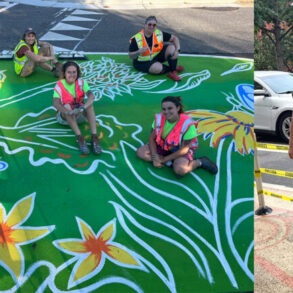Companies that have understood this transformation know that creativity is not just a skill, but a key competitive advantage that drives growth, problem solving and market differentiation.
Creativity is the engine of innovation. It is what enables companies to adapt and thrive in an ever-changing world. From product development to internal communication, the world’s most successful companies have integrated creative thinking into their decision-making and problem-solving processes. But how can creativity be fostered within an organisation? One of the most important elements to achieve this is the physical environment: the architecture and design of workspaces.

Spaces that inspire: The link between architecture and creativity
Architecture and interior design play a crucial role in stimulating creativity. Open spaces that encourage collaboration, areas that integrate visual art, and environments that promote freedom of thought can have a significant impact on employees’ ability to generate new ideas.
Studies have shown that creative workspaces help reduce stress, improve employee well-being and increase productivity. An environment that incorporates art, nature and technology is able to motivate teams and create an atmosphere conducive to innovation. Leading companies around the world are embracing these principles and designing spaces that not only focus on functionality, but also on inspiring and nurturing the creative talents of their employees.
Telefónica District: A space designed for innovation
Telefónica is a clear example of how architecture and design can be strategic allies in fostering creativity. At its headquarters in Madrid, the Telefónica District, the company has opted for an infrastructure that is specifically designed to foster collaboration, innovation and the well-being of its employees. This business complex, inaugurated in 2008, was designed by the renowned Spanish architect Rafael de La-Hoz in collaboration with Fenwick Iribarren Architects, and is an example of how architecture can be a vehicle for creativity and business success.
Telefónica District stands out as a space that reflects the values of transparency, openness and sustainability. Its design includes large open work areas, surrounded by natural light, gardens and breakout spaces that promote the exchange of ideas between employees from different departments. In addition, the incorporation of art in key areas of the campus creates an atmosphere that combines technology and culture, helping to stimulate the creative mind.
Architecture at the service of creativity
The design of the Telefónica District is a reflection of how Telefónica understands that the physical environment can be a catalyst for innovation. The workspaces are designed to encourage open communication between teams, breaking down traditional barriers of hierarchy and promoting horizontal collaboration. The spacious courtyards and common areas, together with the materials used in the construction, create a bright, dynamic and healthy environment.
One of the keys to the success of the Telefónica District is its flexibility. The buildings in the complex allow Telefónica to adapt to organisational and technological changes with ease, which is essential in an industry as dynamic as telecommunications. This approach, which blends modern architecture, sustainable design and green spaces, has not only improved employee productivity and well-being, but has also positioned Telefónica as a benchmark for creating work environments that foster creativity.
The impact of art in the workplace
Another relevant aspect of the project is the incorporation of art in various areas of the Telefónica District. The works of art not only serve as decorative elements, but also play an important role in creating an environment that inspires employees. By integrating art into the workspace, Telefónica has created a place where technology and culture converge, underscoring its focus on fostering a diverse and creative corporate culture.
Art in the workplace can act as a bridge between rational and lateral thinking, stimulating employees’ ability to generate innovative solutions. In addition, research has shown that art in the office can reduce stress and improve employee morale, ultimately resulting in greater creativity and productivity.
One of the highlights of the Telefónica District project is the continued integration of art in the workplace. A recent example of this is the acquisition of the sculpture ‘Iris’ by the renowned Spanish artist Jaume Plensa. This monumental work is not only a decorative piece, but also symbolises the fusion of creativity and technology, both fundamental pillars of Telefónica’s corporate culture.
By including this work in its facilities, Telefónica is taking a further step in creating an environment that encourages its employees to think differently, to challenge established limits and to develop new solutions. Plensa’s art encourages reflection and creativity, which is essential in an environment where constant innovation is key to staying competitive in the technology market.
Furthermore, the incorporation of this sculpture reinforces the idea that art in the workplace is not only an aesthetic complement, but also acts as a catalyst for creativity. By acquiring works such as Plensa’s, Telefónica reaffirms its commitment to creating workspaces that not only improve productivity, but also enrich the mental and emotional well-being of its employees, promoting an environment where culture and technology converge to give rise to new ideas.
Conclusion
Telefónica has demonstrated, through Distrito Telefónica, how architectural design and well-conceived workspaces can be powerful tools for fostering creativity and innovation. The focus on creating collaborative, open and aesthetically inspiring environments not only improves productivity, but also reinforces corporate culture and employee well-being.
Creativity and art, integrated into workspaces, are key factors that enable companies to successfully meet the challenges of the future. By investing in this type of infrastructure and designing spaces that stimulate innovative thinking, Telefónica has consolidated its leadership not only in the technological field, but also as a benchmark in the creation of work environments.
This post was originally published on this site be sure to check out more of their content







